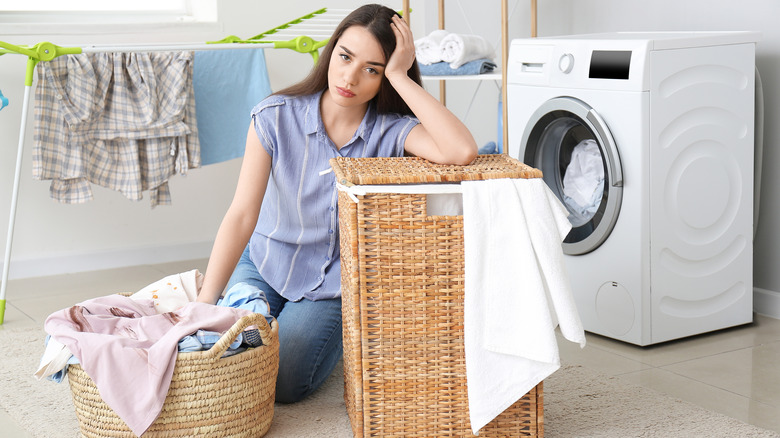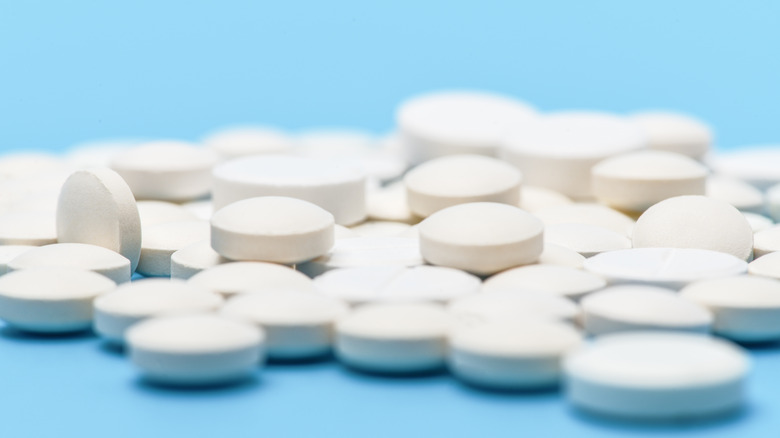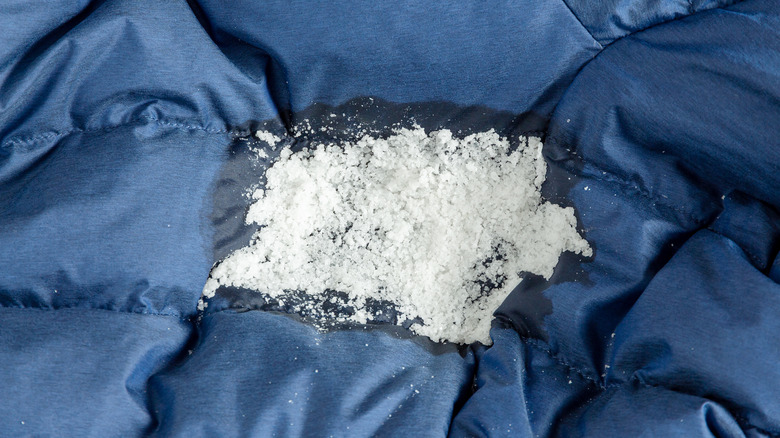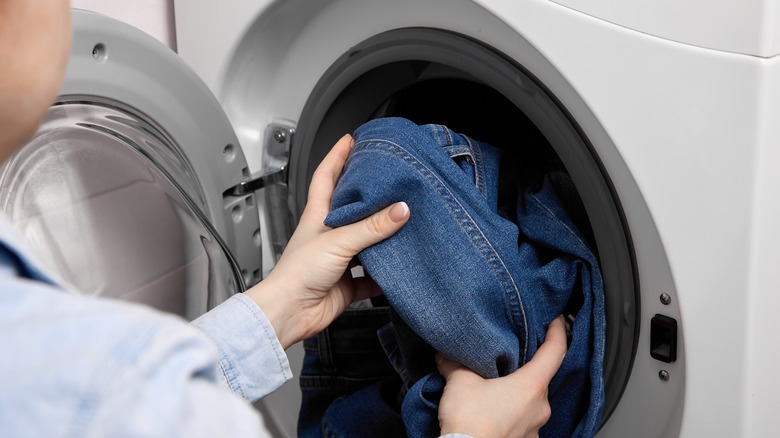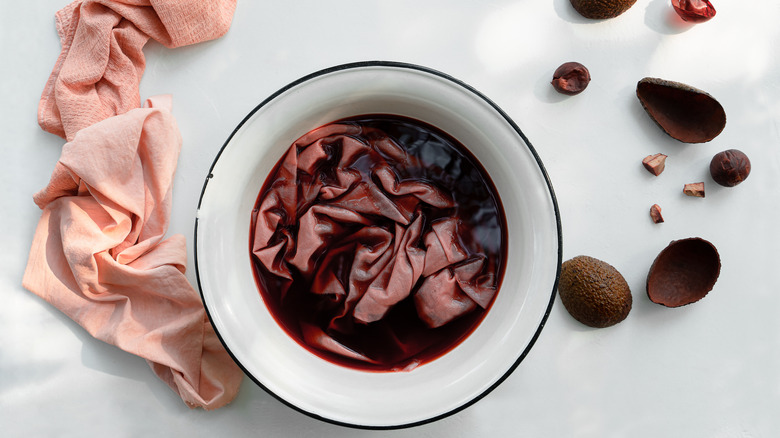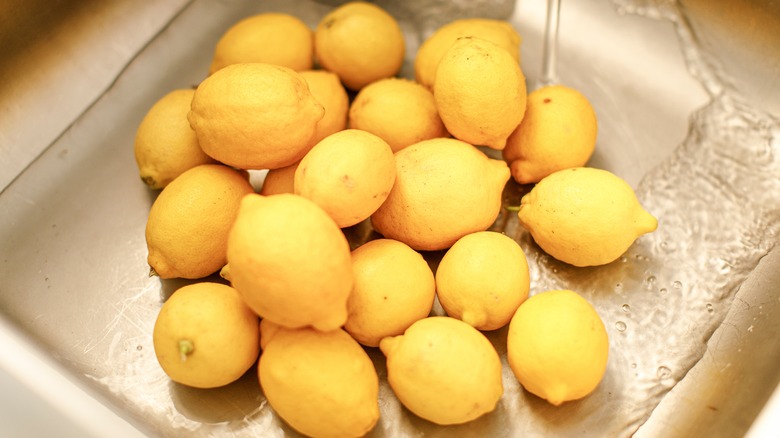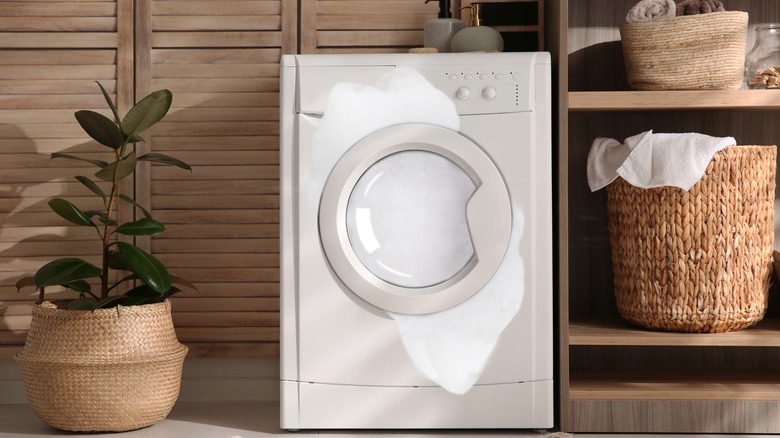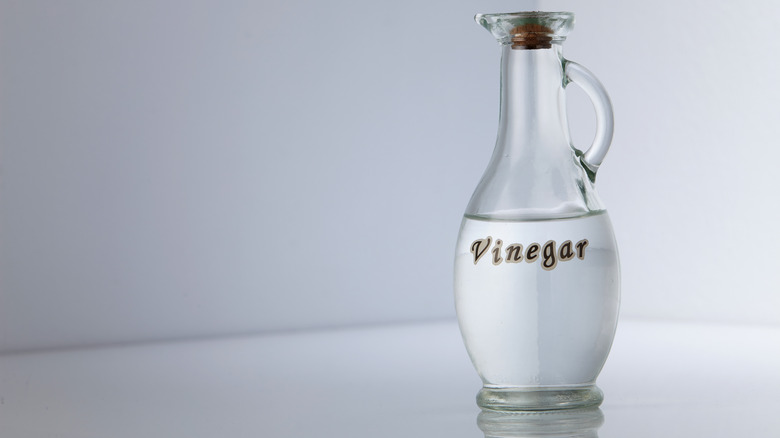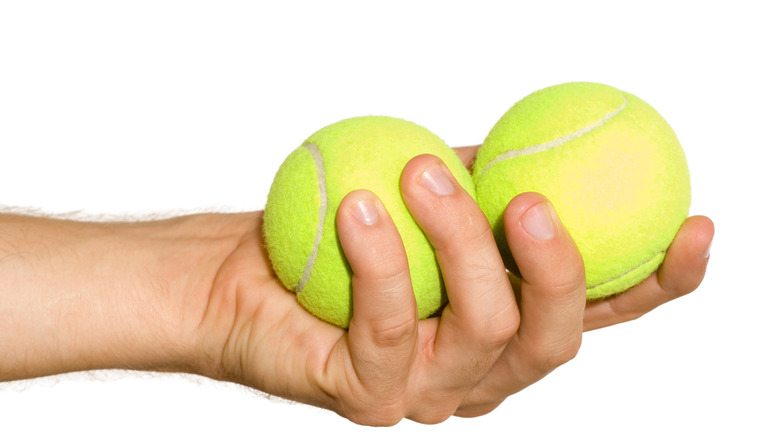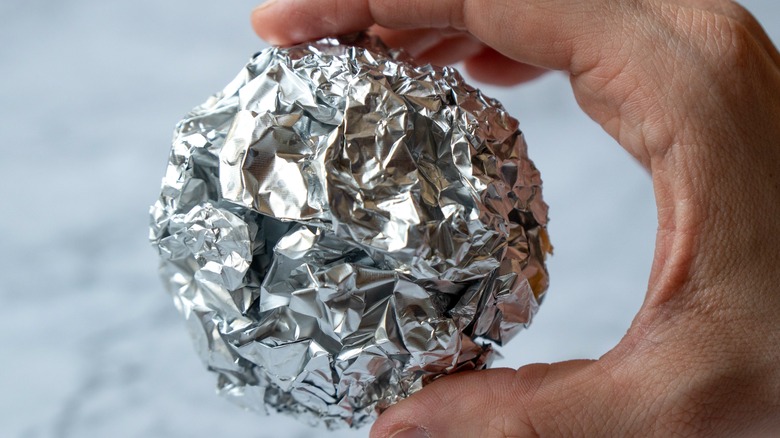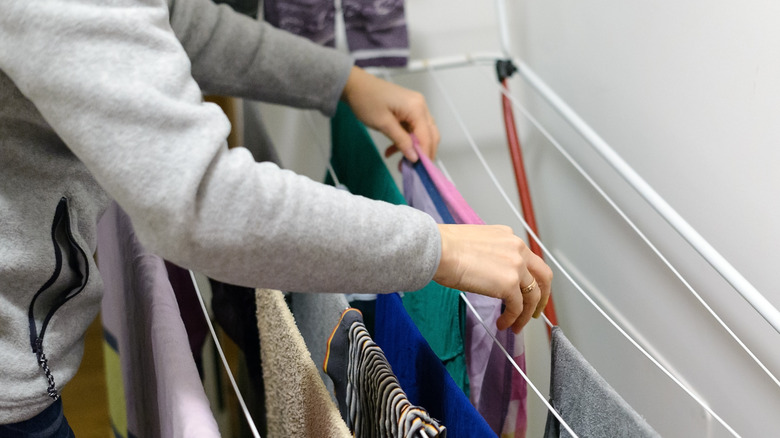Laundry Hacks That Are A Waste Of Time
Washing clothes can be a fun and fulfilling activity, but only if it's simplified and effective. In the quest for efficiency, people often turn to hacks that promise to make the process easier. Over the years, several of these tricks have been passed down from generation to generation. However, many of them end up being myths whose facts are either distorted over time, exaggerated, or misunderstood. Worse, many people realize it too late and end up trying dangerous laundry hacks that can cause damage or make them waste valuable time and energy.
Although hacks can be genuinely helpful, many people would save more time, energy, and resources if fact and fiction could be cleared up beforehand. And while some wash-day mistakes are surprisingly easy to fix, many are not, and the wrong hack can quickly ruin a garment. In this article, we will separate the tried-and-true ideas from the ones that aren't really useful so you can save tons of time.
Using aspirin to whiten whites
The idea that aspirin is the secret to keeping white clothes bright might sound like a clever hack, but it falls into the category of somewhat exaggerated laundry myths. It's true that aspirin contains acetylsalicylic acid, which can help break down certain stains and residues. But, it takes much more time and effort than simply pouring some bleach into your washer.
Aspirin's effectiveness as a whitening agent comes with some strenuous conditions. You'll need to crush several aspirin tablets into a powder, dissolve them in water, and pre-soak your whites for an extended period. By several, consider the average washer uses around 80 liters of water per wash, and for every 4 liters, you need around 5 aspirin tablets. That is about 100 tablets of aspirin for a single load. Even then, the results may not be as striking as those achieved with bleach. However, if you're sensitive to the strong odor of bleach or have skin that's easily irritated, aspirin can be a gentler alternative, especially with small, hand-washed loads.
Adding salt to stop color bleeding and brighten clothes
Using salt in the laundry room is a commonly suggested method to prevent color bleeding and enhance the vibrancy of your clothes. This hack operates on the principle of ionic exchange and ionic bonding. When dissolved in water, salt introduces sodium ions that can competitively displace the dye ions that have bled into the water from colored fabrics, forcing them to stay in place on the fabric.
However, the effectiveness of salt in preventing color bleeding depends on several key factors. For starters, it requires a sufficient amount of water to facilitate the ionic exchange. If you overload your washing machine with clothes, the water may not contain enough salt to create the necessary chemical reaction, rendering this method ineffective. Calculating the amount of salt you need is yet another hassle. Additionally, the success of salt's color-preserving qualities depends on the type of dyes used in your garments. While it can be highly effective with some dyes, it may not work as well with others, particularly those that are more resistant to ionic bonding.
Placing jeans in the freezer to freshen them
To extend the lifespan of jeans, some people may try avoiding unnecessary washes. One commonly touted technique is placing jeans in the freezer, with the belief that the cold temperatures will help keep them fresh and kill germs. However, the hack itself is filled with scientific inaccuracies: putting jeans in the freezer doesn't kill germs. Low temperatures only render some bacteria inactive. Bacteria can still survive and thrive once the jeans return to room temperature.
Moreover, the freezer is primarily used to store food, so this practice of mixing clothing with edibles may lead to contamination. Whatever germs that may have been picked up as the jeans were worn can get transferred to the food. Therefore, although freezing jeans can help maintain their shape and prevent unnecessary wear, it comes with risks. Not to mention that there are several ways you can properly wash denim jeans to preserve them and calm any anxieties you may have.
Using coffee or tea to make darks darker
The idea of using coffee or tea to darken dark-colored clothing stems from the strong pigments present in these beverages. To use this hack, you would need to add coffee to your wash cycle or soak the garments in a coffee solution for several hours. The theory goes that some of this pigment will transfer to your clothes, intensifying their color.
That much is true: the pigments in coffee or tea can temporarily darken fabrics. However, the pigment left on your clothes is not permanent and tends to fade with subsequent washes, making it a rather short-lived solution. Furthermore, the use of coffee in your washing machine can potentially damage your appliance over time. This method also demands a substantial quantity of coffee, making it a less practical choice compared to using a high-quality detergent or properly washing dark colors to prevent fading.
Adding lemon as a detergent booster
There are several reasons why people add lemon juice to their laundry. The main active ingredient that makes the fruit so popular is citric acid, which is abundant in them. This potent ingredient is a powerful whitening agent. However, some believe that lemons have the capacity to boost the effectiveness of laundry detergents, a claim that may be closely tied to their whitening power.
To effectively boost the whitening power of your detergent in a single load, you would need up to half a cup of lemon juice. That translates to a substantial quantity of fruit and a significant amount of manual labor to extract the juice. Remember that most lemons will only give you a few tablespoons of juice. Given the effort involved and the relatively limited benefits, it may not be the most efficient laundry strategy. Traditional bleach would be a more effective choice. If environmental concerns are driving you away from traditional bleach, then try oxygen bleach. It's a greener choice that doesn't compromise on cleaning power.
Using Dawn dish soap to brighten whites
While some laundry hacks may suggest using Dawn dish soap to brighten whites, it's crucial to understand the potential drawbacks, especially for your washing machine. Dishwashing soap is specially formulated to tackle tough grease and other fatty food stains that require significant agitation to remove. Therefore, it's designed to produce a substantial amount of foam or suds.
So, when used in a washing machine, dish soap tends to create an excessive amount of suds. At best, it may trigger a 'Sud' error on some machines, causing your wash cycle to halt. At worst, the excessive suds can cause issues in the pumps and drains, and damage your washing machine over time. Moreover, the high pH levels in dishwashing soap, meant for tackling tough kitchen grime, may not be ideal for your delicate clothing items. It can cause damage to the fabric fibers and affect the overall quality and longevity of your clothes. To ensure the proper functioning of your washing machine, proper energy use, and the integrity of your clothes, it's essential to use high-efficiency (HE) detergents, especially if you have an HE machine.
Relying on vinegar as a disinfectant
Vinegar is a popular household remedy for various cleaning tasks due to its acidic properties. However, when it comes to disinfection, vinegar has its limitations. A potent disinfectant should have the ability to eliminate at least 99.9% of germs. While this culinary favorite is effective against some strains of bacteria, such as E.coli and Salmonella, typical vinegar falls short of this benchmark and should never be used alone as a disinfecting agent. A better alternative would be dedicated laundry disinfectant or bleach.
That said, it can still find its place in cleaning routines. For example, a 6% acetic vinegar solution can be used to soak clothes and effectively eliminate mold. It can also help get rid of stubborn odors clinging to clothing items. Therefore, while vinegar may not be the ultimate disinfectant for all scenarios, it can be a valuable tool in your arsenal, particularly for stripping laundry items with detergent build-up.
Tossing in tennis balls for fluffing and softening laundry
Tennis balls can be used in the dryer for fluffier, softer laundry. While they're effective, it's crucial to remember that they shouldn't be used excessively. Tennis balls excel at revitalizing bulky items like pillows and comforters, efficiently breaking up clumps and ensuring even drying. When thrown into the dryer with your loads, tennis balls bounce around, creating space between the fabric layers. This movement helps loosen up the wet laundry, allowing hot air to circulate more efficiently to speed up your laundry's drying time.
However, delicate fabrics such as silk and lace are not tennis ball-friendly. The vigorous bouncing can damage them, leading to tears or snags. Additionally, tennis balls are notorious for their noise in the dryer, akin to a lively game on the court. If laundry time overlaps with your quiet hours, this may be unfavorable. Furthermore, the nature of tennis balls can potentially transfer dye or leave a rubbery odor on your clothes. To avoid this, you'll have to make sure they're clean and free from any debris or dirt. Or, opt for wool dryer balls that are designed for the purpose.
Using aluminum balls instead of dryer sheets
Using aluminum balls as an alternative to dryer sheets and to reduce static has gained some attention, but it's a laundry hack that might not be worth the trouble. While aluminum balls themselves are not dangerous, they come with a few disadvantages. Firstly, they aren't as effective at softening and drying clothes as traditional dryer sheets. If you do not particularly enjoy the scents that dryer sheets provide, you can easily find unscented ones on the market to avoid any fragrance concerns.
Another issue is that you have to ensure that the aluminum ball is entirely smoothed out. The jagged ends of a crumpled foil ball can potentially damage or snag your laundry, defeating the purpose of using them. Furthermore, this method can generate excess noise in the dryer, which can be a nuisance. In summary, while aluminum balls are not harmful, they have relatively low effectiveness and take work to make them an extra smooth surface making them a less convenient choice compared to traditional dryer sheets.
Allowing clothes to dry indoors
Drying clothes indoors has its merits if you do not have a dryer or have one that doesn't dry clothes completely. Often, it is chosen to preserve vibrant colors by avoiding the harsh effects of direct sunlight. It's also considered a practical choice when garments can be hung near a window or in a warm, well-ventilated room. However, this could potentially make this hack even more dangerous.
Hanging moist clothes in warm rooms can create a breeding ground for mold and mildew. These fungi are known to cause numerous respiratory infections. The trapped moisture and warmth in your living spaces not only pose a potential health hazard but can also result in musty odors that affect the appeal of your home. Furthermore, while indoor drying can prevent fading, it may hinder the clothes from drying completely. Prolonged dampness can lead to various issues, including the development of unpleasant odors and a less-than-crisp feel to your fabrics.
